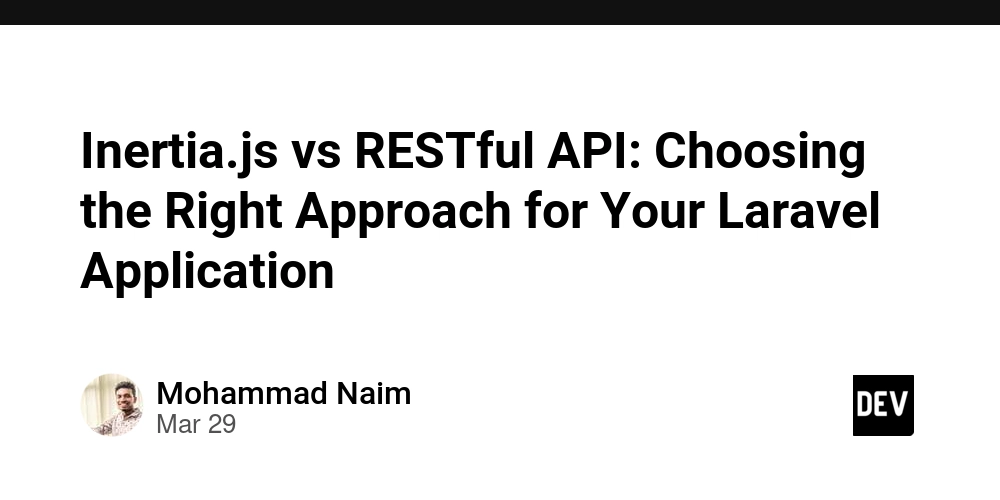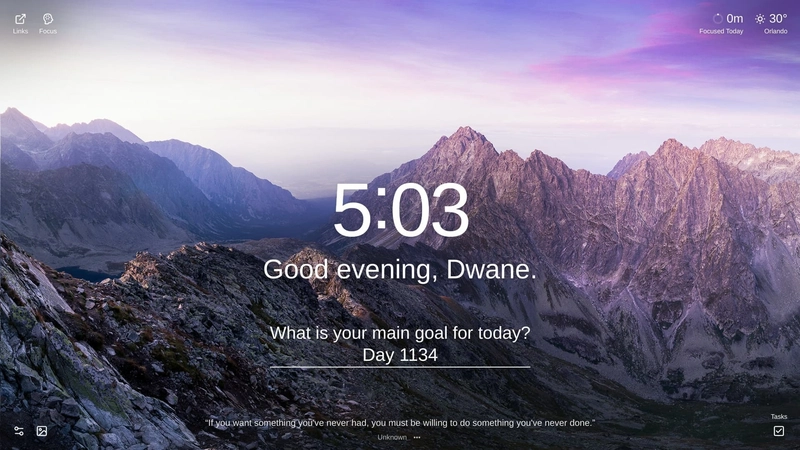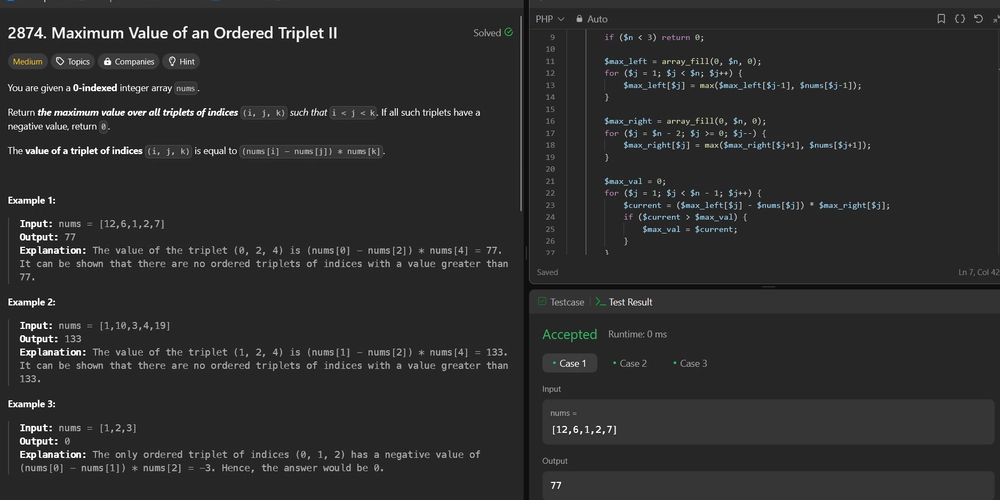Inertia.js vs RESTful API: Choosing the Right Approach for Your Laravel Application
Inertia.js: Inertia.js is a framework that allows developers to build modern, single-page applications (SPA) using Laravel and JavaScript frameworks like React, Vue, or Svelte, without the need for a separate API. It acts as a bridge between the backend (Laravel) and the frontend (JavaScript), allowing you to use Laravel routes and controllers while rendering JavaScript components instead of Blade views. RESTful API: RESTful API (Representational State Transfer API) is an architectural style that allows communication between a client and a server using HTTP methods such as GET, POST, PUT, and DELETE. It enables applications to exchange data in a structured way (usually JSON) and is widely used to build scalable and secure applications that can serve multiple frontend clients, including mobile apps, web apps, and third-party integrations. When to Use Inertia.js: If you want to build a single-page application (SPA) without setting up a separate frontend. When working on a small to medium-scale project that doesn’t require a dedicated API. If you prefer to work with Laravel’s ecosystem and avoid managing API authentication and state. When building a project with minimal external integrations. When to Use a RESTful API: If you’re developing a large-scale application that requires separate frontends, such as a web app and a mobile app. When your project needs to expose data to third-party services or other applications. If your team consists of separate backend and frontend developers who work independently. When you need fine-grained control over security, authentication, and data transfer. Advantages of Inertia.js: Simplified Development: No need to build and manage a separate API. Seamless Laravel Integration: Works well with Laravel’s existing routing, controllers, and middleware. Faster Development: Reduces the complexity of handling API requests and state management. Better for Laravel Developers: Uses familiar Laravel conventions, making it easier for Laravel developers to work with modern JavaScript frameworks. Advantages of RESTful API: Scalability: Supports multiple frontends, including mobile apps, web apps, and third-party clients. Security: Allows for more secure authentication methods like OAuth and JWT. Data Control: Provides fine-grained control over data access and permissions. Flexibility: Enables microservices architecture and headless CMS development. The choice between Inertia.js and a RESTful API depends on the scale and requirements of your application.

Inertia.js: Inertia.js is a framework that allows developers to build modern, single-page applications (SPA) using Laravel and JavaScript frameworks like React, Vue, or Svelte, without the need for a separate API. It acts as a bridge between the backend (Laravel) and the frontend (JavaScript), allowing you to use Laravel routes and controllers while rendering JavaScript components instead of Blade views.
RESTful API: RESTful API (Representational State Transfer API) is an architectural style that allows communication between a client and a server using HTTP methods such as GET, POST, PUT, and DELETE. It enables applications to exchange data in a structured way (usually JSON) and is widely used to build scalable and secure applications that can serve multiple frontend clients, including mobile apps, web apps, and third-party integrations.
When to Use Inertia.js:
- If you want to build a single-page application (SPA) without setting up a separate frontend.
- When working on a small to medium-scale project that doesn’t require a dedicated API.
- If you prefer to work with Laravel’s ecosystem and avoid managing API authentication and state.
- When building a project with minimal external integrations.
When to Use a RESTful API:
- If you’re developing a large-scale application that requires separate frontends, such as a web app and a mobile app.
- When your project needs to expose data to third-party services or other applications.
- If your team consists of separate backend and frontend developers who work independently.
- When you need fine-grained control over security, authentication, and data transfer.
Advantages of Inertia.js:
- Simplified Development: No need to build and manage a separate API.
- Seamless Laravel Integration: Works well with Laravel’s existing routing, controllers, and middleware.
- Faster Development: Reduces the complexity of handling API requests and state management.
- Better for Laravel Developers: Uses familiar Laravel conventions, making it easier for Laravel developers to work with modern JavaScript frameworks.
Advantages of RESTful API:
- Scalability: Supports multiple frontends, including mobile apps, web apps, and third-party clients.
- Security: Allows for more secure authentication methods like OAuth and JWT.
- Data Control: Provides fine-grained control over data access and permissions.
- Flexibility: Enables microservices architecture and headless CMS development.
The choice between Inertia.js and a RESTful API depends on the scale and requirements of your application.










![From drop-out to software architect with Jason Lengstorf [Podcast #167]](https://cdn.hashnode.com/res/hashnode/image/upload/v1743796461357/f3d19cd7-e6f5-4d7c-8bfc-eb974bc8da68.png?#)





























































